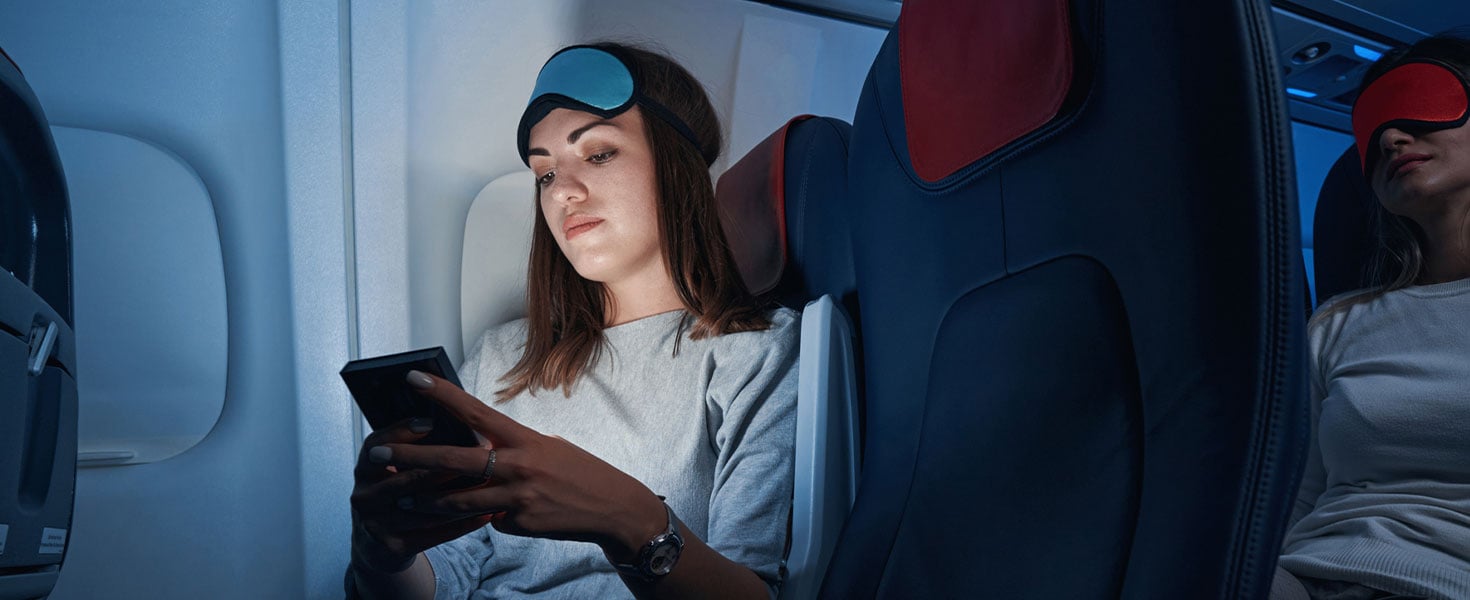
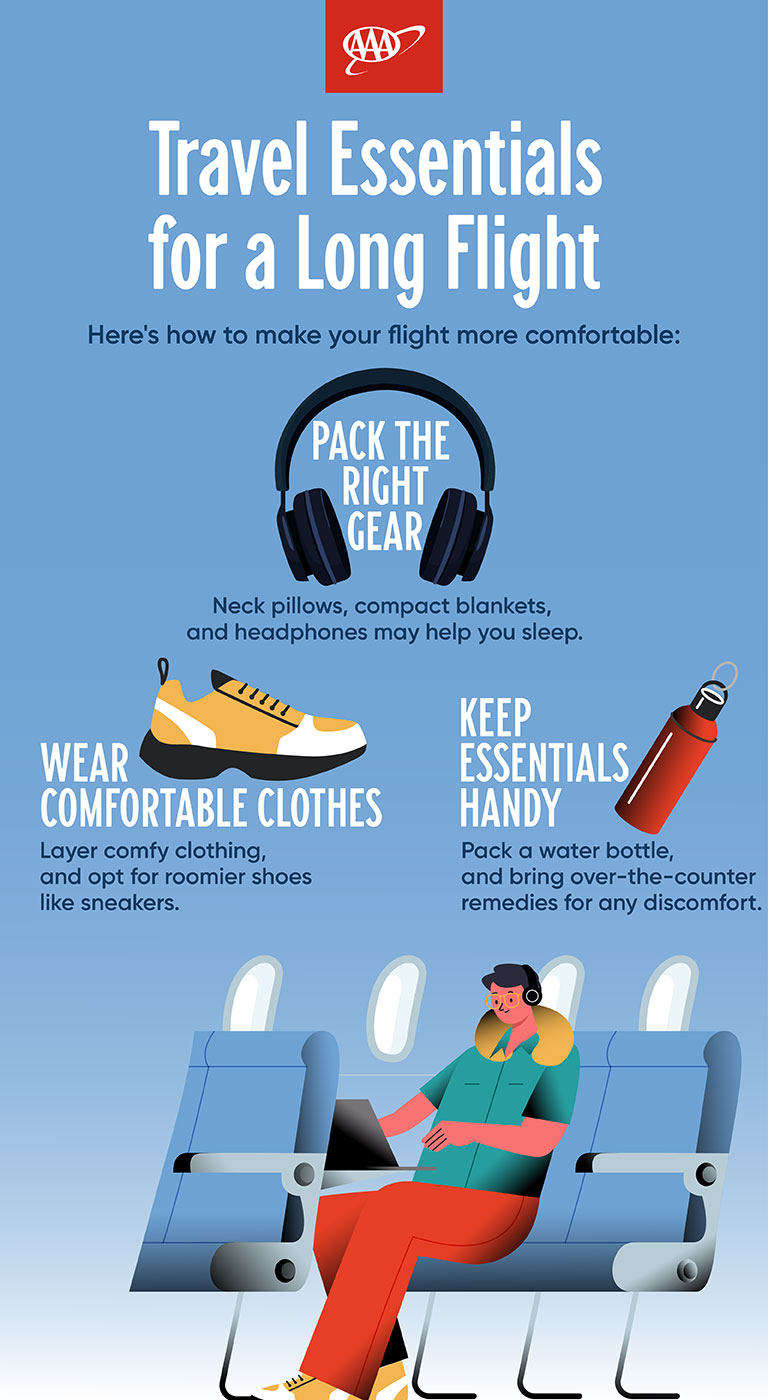
Long flights, especially overnight flights, are the bane of travelers’ existence. The basic economy seats that barely recline and the ever-shrinking legroom add to the discomfort. No one enjoys being twisted into a pretzel for hours, but if you’re flying to Europe, Asia, or Africa, you’re in for, unfortunately, a long flight. The good news is that there are a few ways that you can make exhausting long-haul flights a little more comfortable—starting with packing the right essentials.
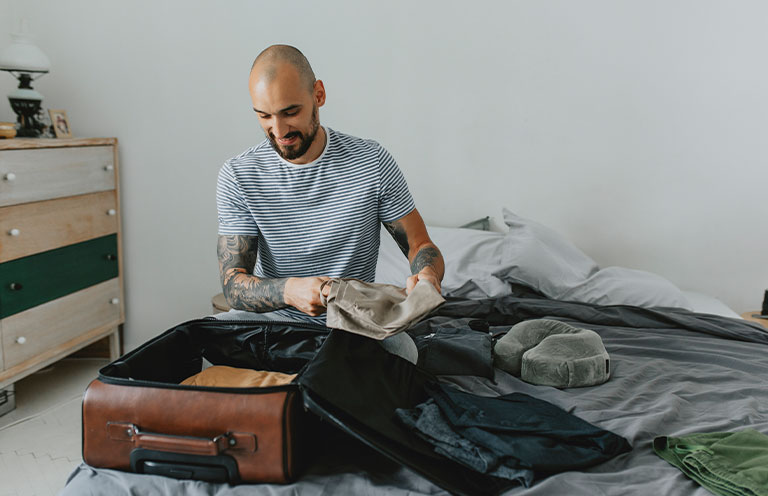
What to pack for a long flight
Once upon a time, airlines supplied pillows, blankets, eye masks and earplugs, but not all do so today. For example, Spirit Airlines doesn’t supply pillows, blankets or amenity kits, and Norse Atlantic Airways offers them for purchase, which may or may not be worth the price to you. You will be much better off bringing your own sleeping gear for your airplane slumber time.
Neck pillows come in many forms and with different functions. Some are inflatable, some are made from memory foam, and others are filled with microbeads. They also come in different shapes and offer various sensory experiences. For example, fleece ones feel softer and fluffier than microfiber. Some pillows are also designed to fit between your back and your seat, providing extra comfort. Others are made to help you sleep facedown. Consider buying and testing a pillow before an overnight flight to ensure that it’ll provide maximum comfort on the plane.
Blankets tend to be bulky, taking a lot of room in your carry-on bag, but some can be quite compact and easily foldable. Others come with their own sack that snap on to your backpack, saving precious space. Eye masks don’t take up any space but will help you get some shut-eye since airplane lights never fully turn off. And a pair of earplugs (or two, in case one gets lost) will block out loud conversations and screaming children. Another way to reduce the overall noise, including the incessant engine hum, is a pair of noise-cancelling headphones. They also help improve the entertainment system’s sound if you prefer to binge on movies and TV shows instead of dozing off.
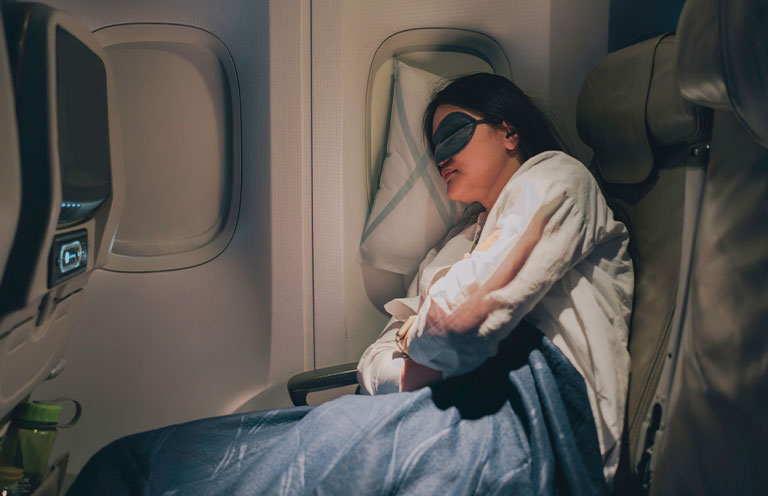
What to wear on the plane
Jeans may make you look good, but they aren’t necessarily the most comfortable attire to snooze in on the plane. Leggings, jeggings, yoga pants and stretchy trousers are comfier alternatives. For men, joggers and hiking pants with a drawstring waist can mimic the much-needed PJ feeling without looking like you just shuffled out of bed.
If you prefer to look a bit more stylish en route to your destination, soft and comfortable linen or cotton pants with an elastic waistband will up your game, and a blend of linen and polyester will wrinkle less. Soft-fabric chinos can do the trick, too.
Layers are essential for comfort during long flights, too. Some planes may be too hot and others too cold, so hoodies, sweaters and vests are key to staying cozy.
So is comfortable footwear. Your feet and legs tend to swell a bit while flying, because sitting for a long time with your feet on the floor causes blood to gather in your leg veins. Wearing a slightly bigger pair of shoes, sneakers or sandals than you normally do will make you feel more comfortable. Similarly, shoes that you don’t have to tie or buckle will go a long way at cruising altitude when you’d want to kick them off for a bit. To keep your circulation going in-flight, you can wear compression socks or compression sleeves that gently squeeze your legs, promoting blood flow.
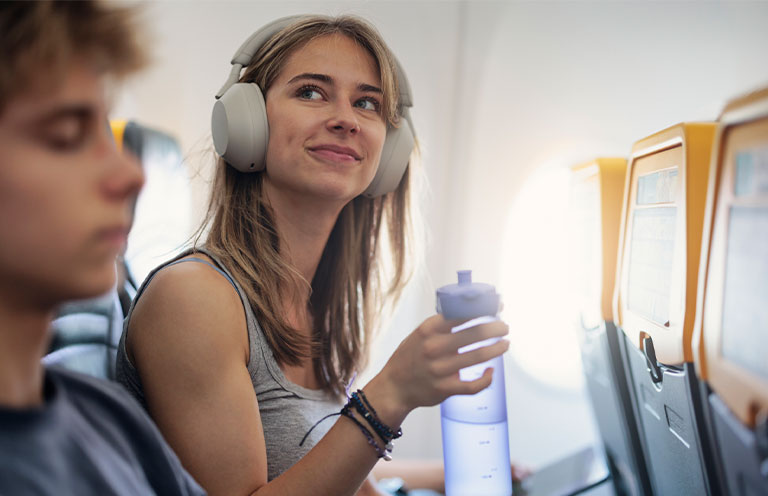
Other travel essentials to ease a long flight
Airplane cabins are notoriously dry, so they dehydrate you quickly. Dehydration can cause headaches and fatigue, so drinking liquids throughout the flight is important. Pack a water bottle and/or a thermos mug, which you can keep in the pocket of the seat in front of you to sip from if you wake up during the night.
Headaches and stomachaches feel even worse when you’re crammed into a tiny seat at 30,000 feet, so it’s a good idea to pack Advil, Tylenol, Tums, Benadryl and any other over-the-counter remedies in the bag that goes under the seat in front of you. Having to drag down your carry-on from the overhead bin during the wee hours and unzip it in the middle of the aisle is an exercise you want to avoid.
While these tips for a long-haul flight won’t get you to your destination any faster, they can help make the miles pass by a little more smoothly so that you can arrive rested and ready for your next adventure.
